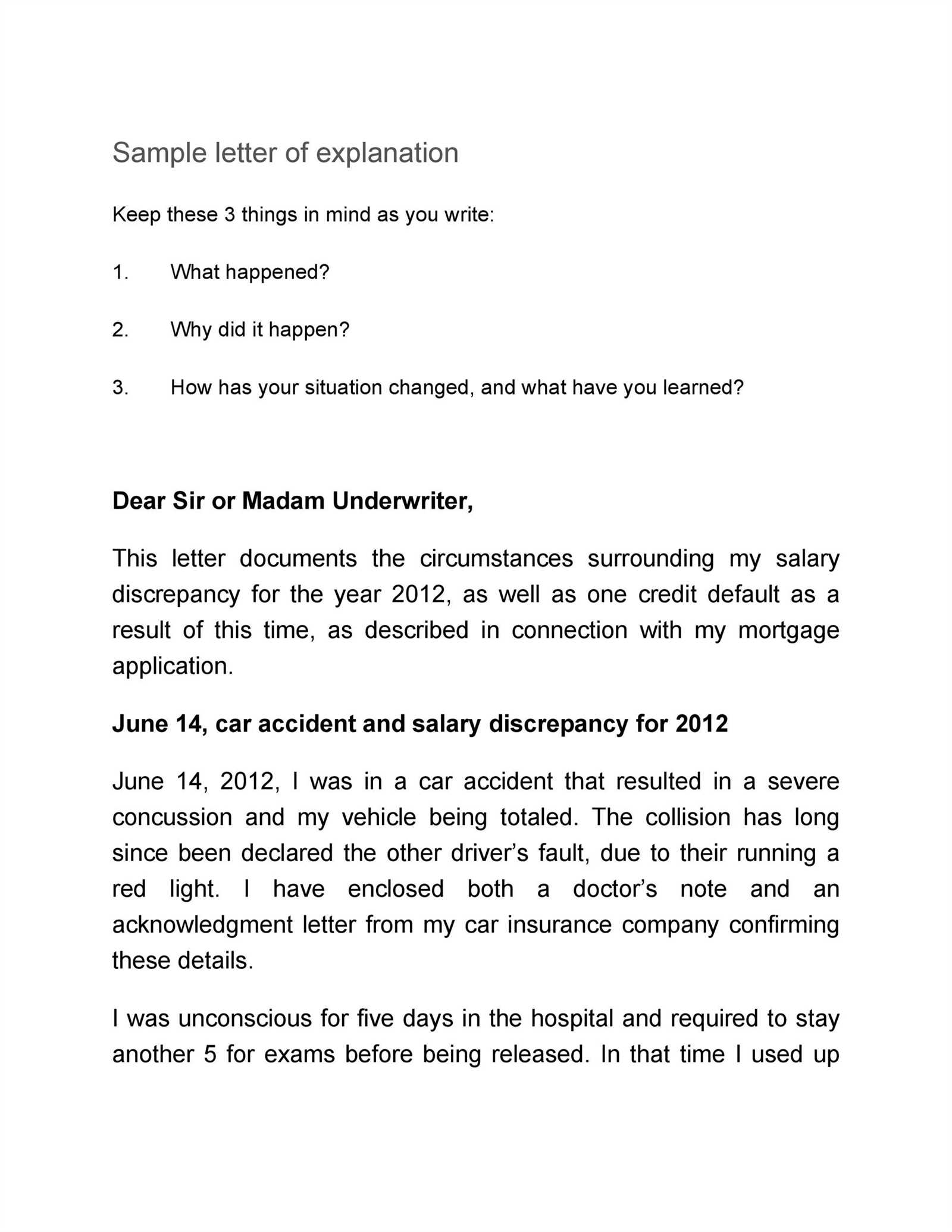Template Letter of Explanation for Different Purposes

There are situations in life where you may need to clarify or justify certain actions or circumstances. These documents are essential in conveying your reasons or providing context to a specific issue, ensuring the reader understands your position. Whether for personal, business, or legal purposes, these written statements require a clear structure and precise wording to effectively communicate your message.
Understanding the Purpose of Your Statement
Before crafting your document, it’s crucial to define its objective. Are you explaining a missed deadline, justifying a decision, or clarifying an issue? Each purpose will shape the tone and structure of your writing. The key is to be direct yet courteous, offering enough detail to make your case without overwhelming the reader.
Types of Situations Requiring an Explanation

- Addressing delays or errors in work or projects
- Explaining financial discrepancies or issues
- Providing context for personal or professional decisions
- Justifying actions in legal or contractual matters
Structuring Your Written Justification
Start with a brief introduction, stating the purpose of your document and the main issue. Then, present the facts in a clear, logical sequence. Ensure each point is explained thoroughly yet concisely. Be transparent but avoid unnecessary details that might cloud the central message.
Key Components of a Strong Explanation
- Introduction: A brief summary of the issue at hand.
- Details: A step-by-step explanation of the circumstances or actions taken.
- Resolution or Outcome: If applicable, explain how the situation was resolved or what actions will be taken to prevent recurrence.
- Closing: A polite conclusion, reaffirming your commitment to resolving the issue or providing any additional necessary context.
Best Practices for Clarity and Impact

To ensure your document is well-received, keep the following tips in mind:
- Be concise: Avoid over-explaining or providing excessive information. Stick to the key facts.
- Use professional language: Stay formal and polite, even if you’re addressing an issue that may be difficult or uncomfortable.
- Stay objective: Focus on the facts rather than emotions or opinions. This enhances your credibility.
Customizing Your Document for Specific Needs
While the general structure remains the same, different situations may require slight adjustments. For example, a professional setting may demand a more formal tone, while a personal explanation may allow for a more conversational approach. Tailor your message to the audience and context to ensure its effectiveness.
Understanding the Purpose and Structure of a Justification Document

There are times when individuals or organizations need to provide context or clarify a particular situation. This form of communication is essential for ensuring that the reader fully understands the reasoning behind an action or decision. It is a structured and formal way of presenting the facts, offering insight into circumstances that might otherwise be unclear.
The first step in creating such a document is understanding how to organize your thoughts and present them clearly. A well-constructed justification provides a logical flow, making it easy for the reader to follow the reasoning and draw the appropriate conclusions. The structure typically includes an introduction, detailed explanation, and a conclusion that wraps up the matter being addressed.
Common Reasons for Creating This Type of Document
There are many situations where you might need to write a statement of justification. Some of the most common include:
- Clarifying delays or missed deadlines in a professional context
- Explaining financial discrepancies or missing documents
- Providing details about an unexpected decision or action
- Addressing misunderstandings or providing clarity in legal or contractual matters
Key Elements to Include in Your Justification

To ensure your message is received effectively, it’s important to include several key components:
- Introduction: Briefly introduce the issue at hand and explain why the document is necessary.
- Details: Provide a clear, step-by-step account of the events or actions that led to the situation.
- Resolution or Plan: If applicable, describe how the situation has been or will be addressed.
- Conclusion: End with a polite statement that reinforces your commitment to resolving the issue.
Examples for Various Purposes
Each justification serves a different purpose, so adapting it to the context is essential. Here are a few examples:
- A business document clarifying missed payments or delays
- A personal statement explaining a canceled appointment
- A professional explanation of a decision made in a project or task
Tips for Crafting an Effective Message
When writing your justification, keep the following tips in mind:
- Be clear and direct: Avoid unnecessary details or overly complex language.
- Maintain a professional tone: Even in personal situations, remain polite and respectful.
- Stay objective: Focus on the facts, not emotions or personal opinions.
Adapting the Document for Specific Situations
While the basic structure remains similar, the tone and level of detail may vary depending on the situation. For example, a formal business letter will need a more structured approach, while a casual note to a friend may allow for a more relaxed style. Adjust your message to suit the audience and ensure it is both relevant and clear.